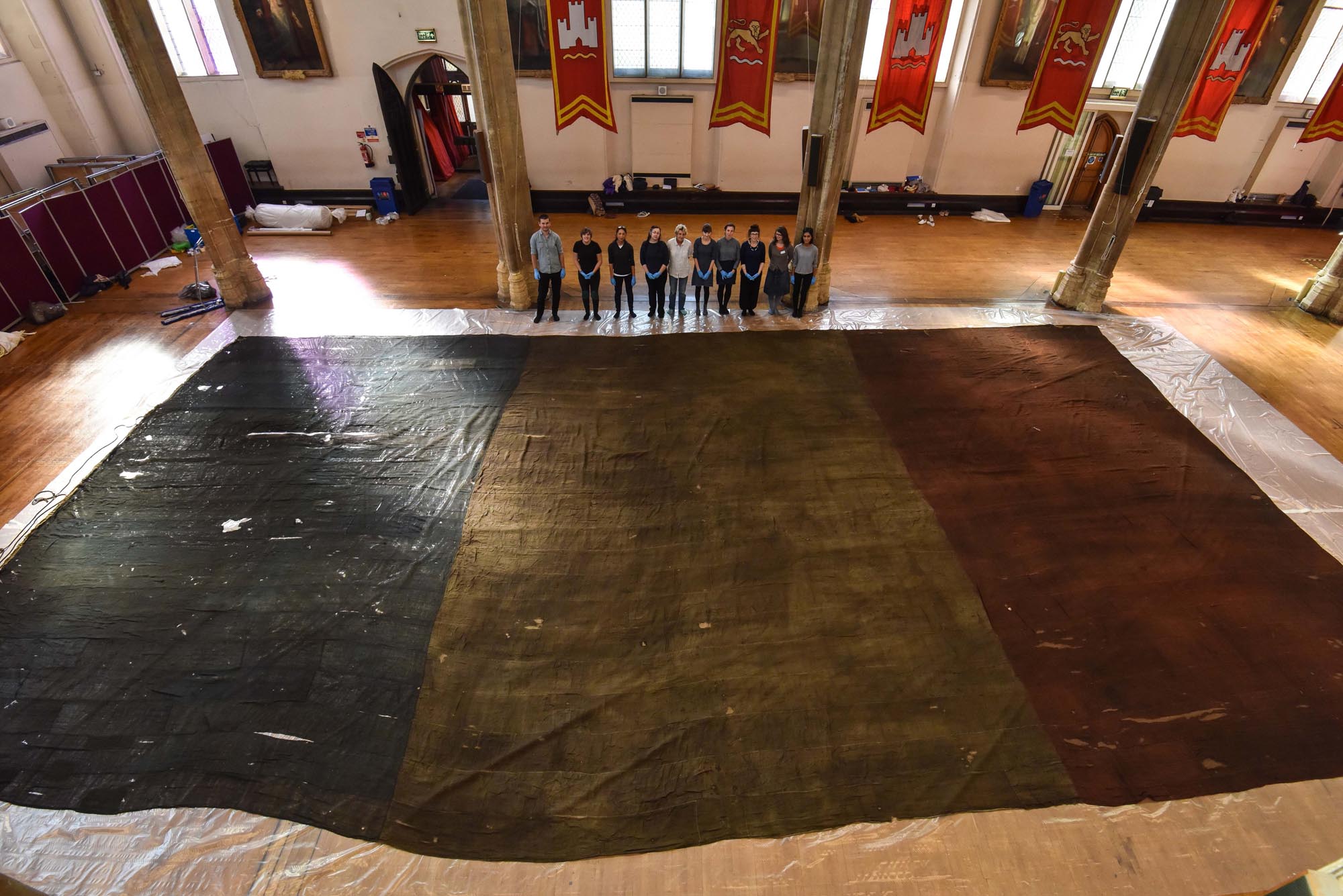In a remarkable historical find, a massive 217-year-old French battleship flag, captured by the legendary Admiral Lord Nelson, is set to go on public display for the first time in over a century. This extraordinary piece of history, known as the Ensign of Généreux, is believed to be one of the earliest existing Tricolours and holds immense significance in the annals of naval warfare.
The Ensign of Généreux: A Storied Relic

The Ensign of Généreux, measuring an impressive 52 feet by 27 feet, was seized by Nelson and his men in 1800 during the Battle of the Malta Convoy. This colossal flag had previously been flown from the stern mast of the French ship Généreux at the renowned Battle of the Nile in 1798, where it had narrowly escaped capture by the British forces.
The Généreux was one of only two ships to evade Nelson’s decisive victory at the Battle of the Nile, but its luck ran out two years later when it was finally seized by one of Nelson’s most trusted captains, Sir Edward Berry. This remarkable Tricolour flag, now recognized as one of the earliest examples of its kind, was then presented to the city of Norwich, where it has been meticulously preserved.
Preserving a Piece of History

After being on permanent display at St Andrew’s Hall in Norwich until 1897, the Ensign of Généreux was exhibited again in 1905 to mark the centenary of the Battle of Trafalgar. Since then, it has been kept in storage due to its fragile condition, awaiting the opportunity for a comprehensive restoration and public unveiling.
Conservationists have undertaken painstaking efforts to ensure the flag’s preservation, including finding a suitable space to carefully unfurl and examine it at its previous home, St Andrew’s Hall. This arduous process has been essential in preparing the Ensign for its long-awaited return to public view.
Unveiling the Ensign

The Ensign of Généreux will take center stage at an upcoming exhibition exploring Admiral Lord Nelson’s deep connection to his home county of Norfolk. Scheduled to open on July 29th and running until October 1st, this exhibition at Norwich Castle Museum will finally allow the public to witness this remarkable historical artifact after more than a century of obscurity.
The volunteers and curators responsible for the flag’s preservation have expressed their excitement and pride in being able to share this unique piece of history with the world. Ruth Battersby-Tooke, the Norwich Castle costume and textiles curator, described the Ensign as “emblematic of Norfolk Museums Service’s Nelson collections, the oldest French Ensign in the UK and the one with the most stirring and thrilling history.”
Conclusion
The impending display of the Ensign of Généreux represents a significant moment in the preservation and appreciation of naval history. This colossal French Tricolour, captured by the legendary Admiral Lord Nelson, stands as a testament to the heroic exploits and strategic brilliance that cemented his reputation as Britain’s greatest naval commander. As the public eagerly anticipates the unveiling of this remarkable relic, it serves as a powerful reminder of the pivotal role that iconic flags and symbols played in the epic sea battles that shaped the course of history.



